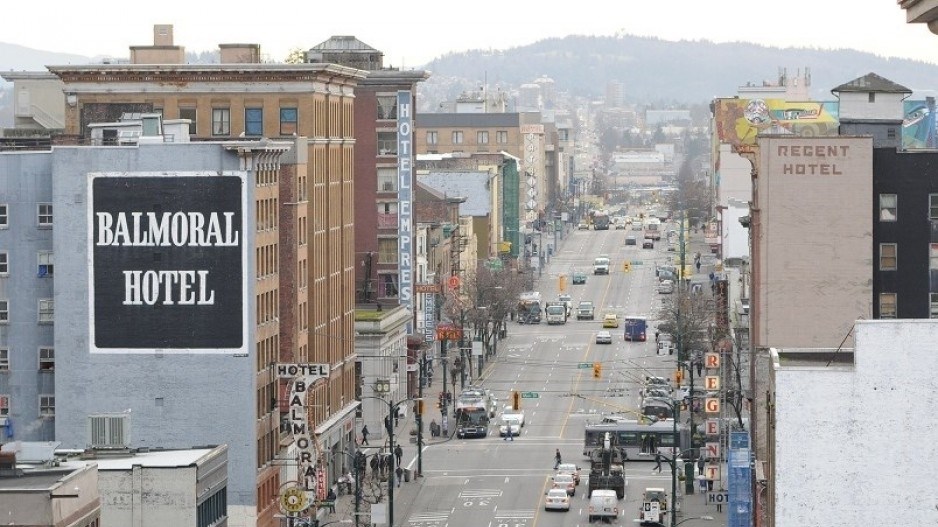It is, without a doubt, Vancouver’s most desolate strip, its skid row.
For decades, the five blocks of Hastings Street that run west from the Patricia Hotel at Dunlevy to the Woodward’s development at Abbott have been ground zero for the city’s social problems.
Drug addiction, homelessness and mental illness are on display writ large, with poverty, trauma and hopelessness driving the misery of the many people who live in the neighbourhood.
Such tragedy on the street — further exposed during the pandemic — has led to years of protest, legal fights and calls to mayors, premiers and prime ministers to address the crises.
In response, medication-assisted treatment for drug users has increased, more injection sites have opened and a campaign to decriminalize simple possession of illicit drugs continues.
Welfare rates have improved, more housing and shelters are available and government has committed to additional programs for people living with a mental illness.
Still, the strip churns with despair.
It does so while the real estate along East and West Hastings — some of it dilapidated and boarded up — is increasingly being bought by the B.C. government and the City of Vancouver for social housing.
A Glacier Media investigation of more than 90 properties along the five blocks of Hastings discovered the two entities own a combined 25 sites dedicated to current and future housing.
It’s the highest concentration of ownership on the strip.
Who owns the Downtown Eastside (DTES)?
For the most part, taxpayers do.
So what then is the end goal of the public investments, which ramped up considerably since December 2020 with an estimated $90 million spent to acquire three hotels, a heritage building, a parking lot and a shelter?
Editor’s note: An investigation by Western Investor shows that the B.C. government, mostly through BC Housing, have consistently paid well over assessed value for real estate to house the needy, including in the DTES. Of 12 Vancouver hotels it purchased in the past year for a total of $258.5 million, the province paid a combined $130.7 million above BC Assessment values.
The strategy, as imagined and implemented by B.C. Housing and the city, is straightforward: to acquire and redevelop property to provide housing for vulnerable, low-income people.
It is a humanitarian and financially sound response to such grand-scale deprivation in the city’s poorest neighbourhood, they say.
But it is not an approach shared by some current and former property owners on Hastings — and others tied to the real estate industry — who believe the investment is based more on containment of a complex neighbourhood than an effort to diversify and rejuvenate.
While acutely aware of the need to address the crises visible outside their doors, they question whether government investments in social housing and restrictive city policies is the way forward on a tired strip of real estate they say is in need of a facelift.
“How can anybody look you in the eye and tell you that what’s happening down there is a good idea?” said Jon Stovell, president and CEO of Reliance Properties, who sold the company’s Burns Block building at 18 West Hastings in April to the B.C. government for $10.9 million (assessed value: $6.7 million).
“Not only is it not good for the people of the city as a whole, it’s not even good for the people that they’re trying to protect down there. It’s the worst place they could possibly be,” Stovell said.
For Glacier Media’s complete investigative report on ownership in the Downtown Eastside, click here.



